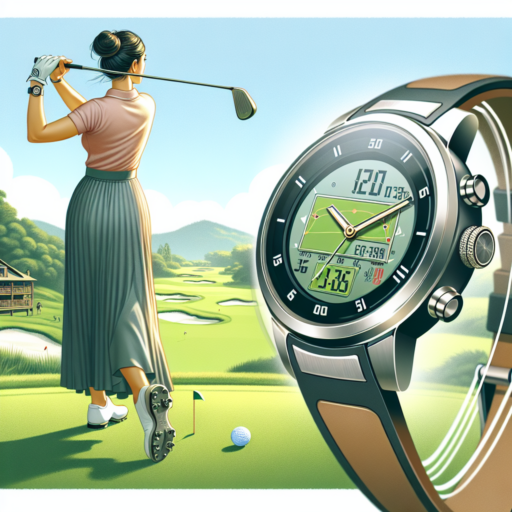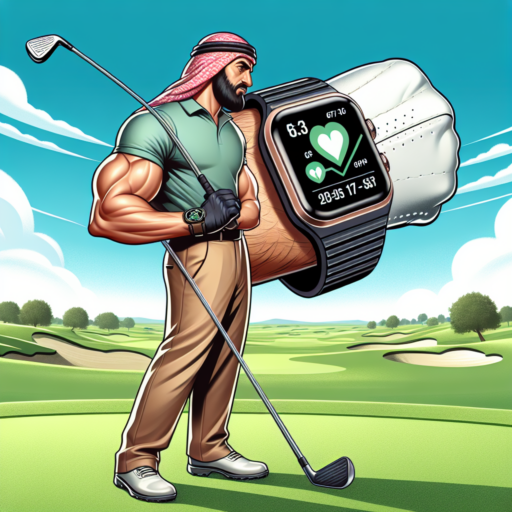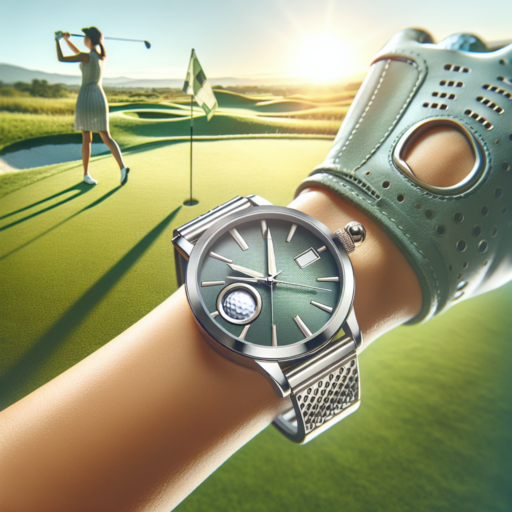Can Apple Watch tell golf distance?
Yes, the Apple Watch is equipped with various applications designed specifically for golfers, enabling it to measure golf distances effectively. This capability allows golfers to gauge the distance to the hole, obstacles, and other critical points on the golf course with a high degree of accuracy. Thanks to the high-precision GPS technology embedded in the Apple Watch, players can enhance their game strategy and make more informed decisions on the course.
How the Apple Watch Measures Golf Distances
The functionality of the Apple Watch in measuring golf distances primarily hinges on its advanced GPS technology and integration with third-party golf apps. These apps leverage the watch’s hardware to provide real-time data on yardages to the front, middle, and back of the green, as well as information on hazards and layup distances. The intuitive interface of the Apple Watch allows for easy access to this data, enabling golfers to quickly assess their environment and plan their next shot.
The Role of Third-Party Golf Apps
While the Apple Watch comes with its own suite of fitness and activity tracking features, the inclusion of third-party golf apps significantly expands its functionality on the golf course. Notable apps such as Golfshot, 18Birdies, and Hole19 offer comprehensive golf GPS solutions, detailed course maps, and digital scorecards, among other features tailored for golfers. By downloading these apps onto their Apple Watch, golfers can unlock a wealth of information to improve their game.
In summary, the Apple Watch serves as a powerful tool for golfers looking to measure distances on the golf course accurately. By utilizing built-in GPS technology and augmenting this capability with third-party golf apps, the device offers valuable insights that can help golfers of all skill levels strategically navigate through their rounds with confidence.
How accurate are golf GPS watches?
Golf GPS watches have transformed the way golfers navigate courses and manage their game. But, amid their popularity, concerns about their accuracy have arisen. These devices operate by using satellite data to pinpoint your location on the course and provide distance information to the front, middle, and back of the green, as well as hazards and doglegs. The precision of these measurements, however, can vary based on several factors.
Factors Influencing Accuracy
- Satellite Signal: The strength and stability of the GPS signal can affect accuracy. Obstructions such as trees or buildings can interfere with the signal, leading to less precise measurements.
- Course Mapping: The detail and currency of the course map in the watch’s database significantly impact its efficacy. Courses that are not regularly updated may have incorrect or outdated information, reducing the device’s accuracy.
- Device Quality: Not all golf GPS watches are created equal. Higher-end models tend to offer more accurate readings, thanks to advanced satellite technology and more comprehensive course databases.
The manufacturers of golf GPS watches typically claim an accuracy of within 3 to 5 yards under optimal conditions. Real-world usage, however, suggests that various external factors can influence this precision. Golfers should also consider the inherent limitations of GPS technology, which, despite advancements, can still be affected by environmental factors and geographical anomalies.
No se han encontrado productos.
Can you use a smartwatch as a golf GPS?
Indeed, utilizing a smartwatch as a golf GPS has become a game-changing move for amateurs and professionals alike. These sophisticated pieces of wearable technology have come a long way, not only in tracking steps and receiving notifications but also in enhancing the golfing experience. Smartwatches equipped with the right apps can serve as highly effective golf GPS devices, offering a plethora of valuable features to golfers.
Key Features of Golf GPS Smartwatches
When transformed into a golf GPS, smartwatches offer several key features that can significantly affect your game. These features include precise distance measurements to the front, middle, and back of the green, hazards identification, and even recommendations for which club to use. Furthermore, some apps provide a comprehensive analysis of your swing, keeping all your golfing statistics in one place for easy accessibility and review.
The versatility and convenience of using a smartwatch as a golf GPS cannot be overstressed. With just a glance at your wrist, you will receive real-time data about distance and hazards, which can help in making quicker, more informed decisions on the course. Additionally, the integration of course maps and the capability to monitor your progress round-by-round offer an enriched golfing experience that traditional handheld devices might not deliver as efficiently.
Do golf watches tell you what club to use?
In the realm of golf technology, golf watches have become an indispensable tool for players looking to enhance their game. One of the most intriguing capabilities of these devices is their potential to advise players on club selection. While not all golf watches possess this feature directly, many offer critical data that can inform a golfer’s choice of club. This includes distance to the front, middle, and back of the green, as well as hazards and doglegs. Such detailed course insight allows players to make more informed decisions about which club to use for their shots.
Advanced golf watches go a step further by incorporating features like automatic shot detection and tracking, club performance analytics, and even recommendations based on past performance data. These watches analyze the distance covered by each shot and, over time, can suggest the most effective club for a particular distance or situation based on historical data. However, it’s important to note that while these features can significantly aid in decision-making, they do not replace the importance of a golfer’s judgment and experience.
It’s also worthwhile to consider the rules and etiquette of golf concerning technology use. The governing bodies of golf, such as the USGA (United States Golf Association) and R&A (Royal & Ancient), have specific regulations on the use of distance-measuring devices (DMDs) in competition. While golf watches are generally allowed, features that directly suggest a club based on current conditions (such as wind speed or temperature) could be restricted. Thus, golfers should familiarize themselves with the rules applicable in their competition scenarios.




